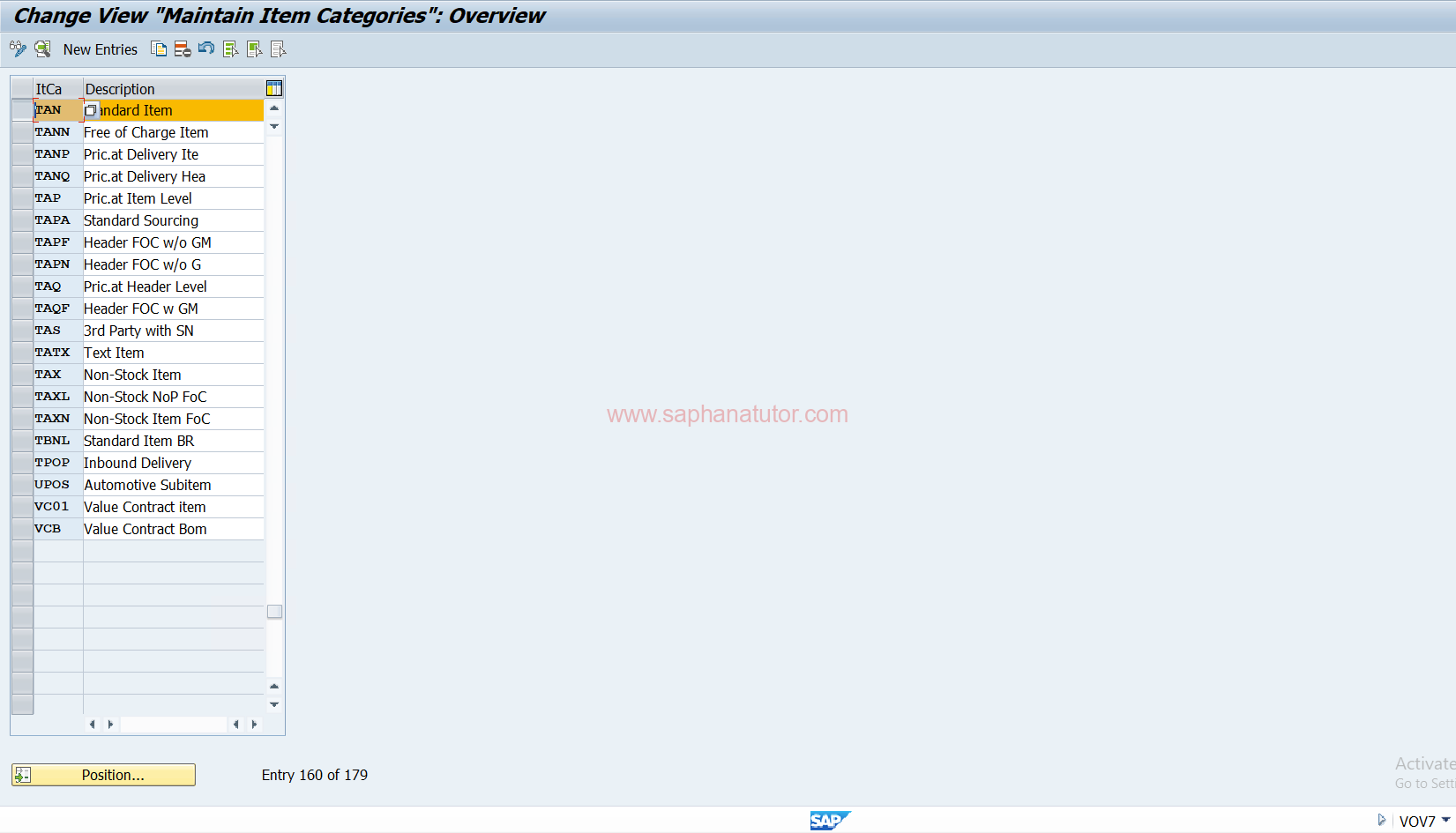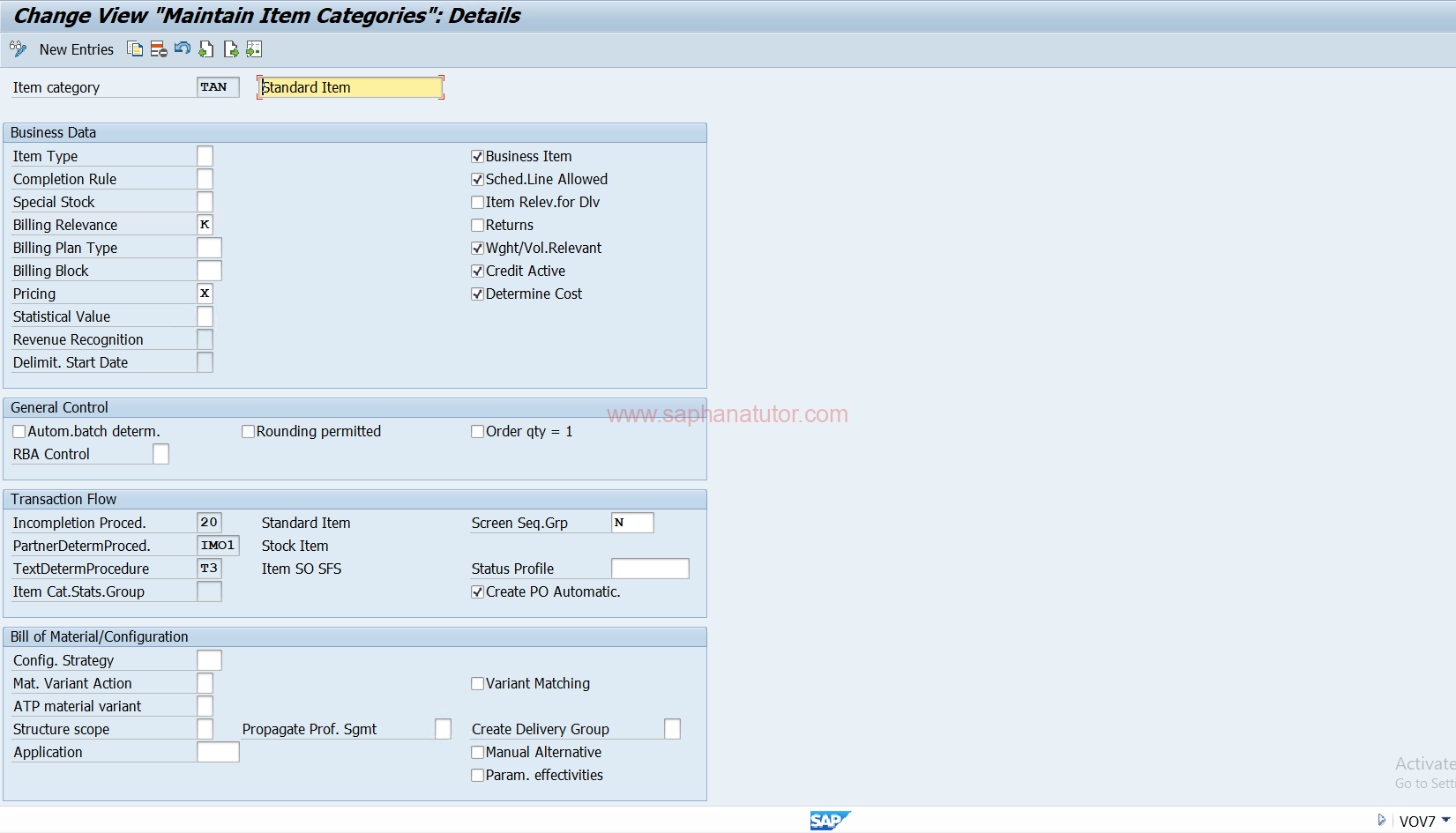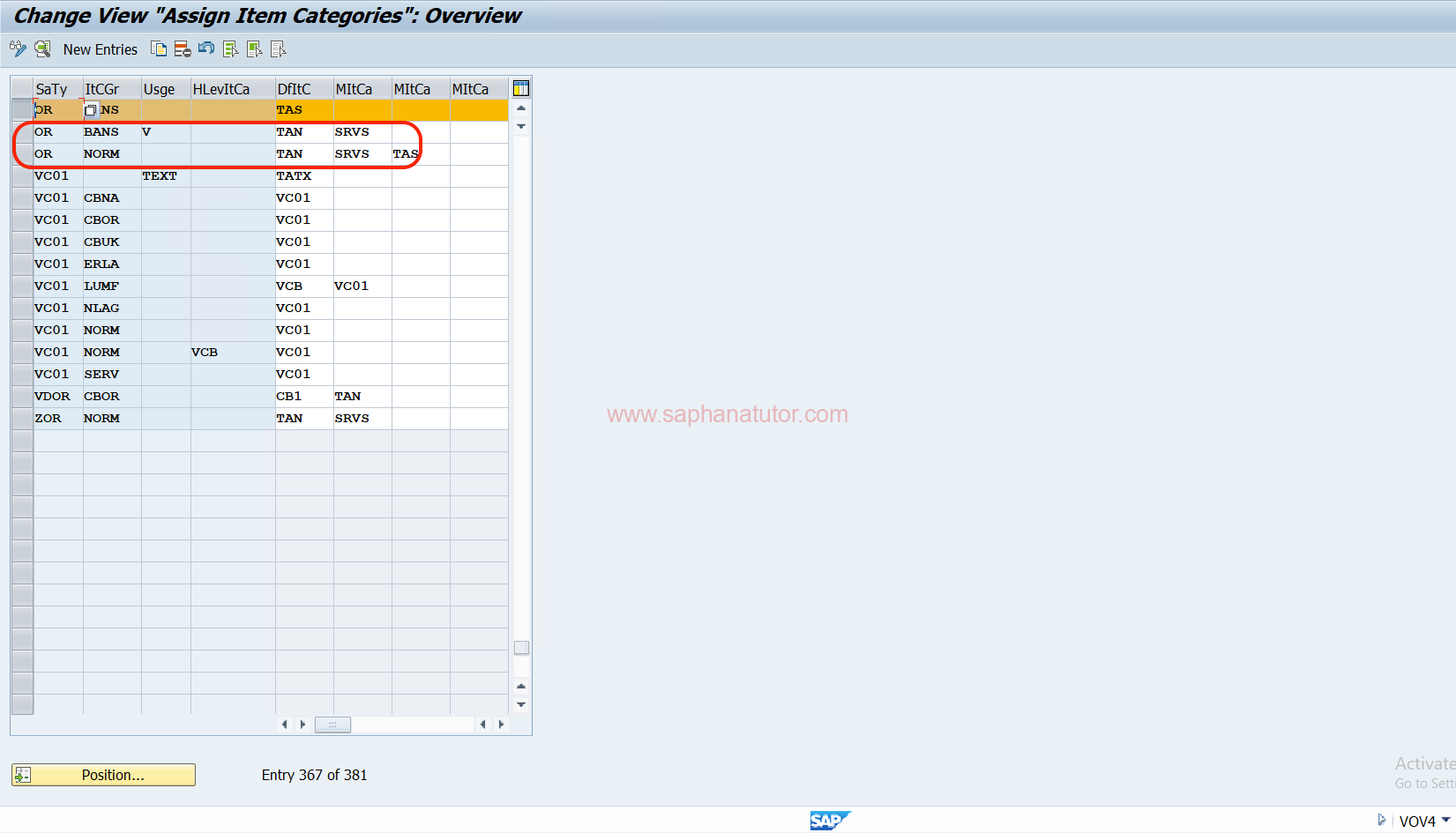Introduction to SAP SD Item Category (VOV7)
Item categories in SAP Sales and Distribution (SD) are pivotal in determining how the system processes each item in a sales document. Each item category is controlled by a set of attributes and functions, defining the behavior of an item within the sales and distribution process. The Transaction code used to open SAP SD Item Category is VOV7 and also we can open using the img path.
IMG Path for Configuring Item Categories in SAP SD
SPRO → SAP Reference IMG → Sales and Distribution → Sales → Sales Documents → Sales Document Item → Define Item Categories
- Choose standard Item category, example TAN


- Item Type: Determines whether an item is a standard product, service, or text. This affects how the system handles the item in terms of pricing, inventory management, and billing.
- Billing Relevance: Specifies how an item is billed. This is crucial for revenue recognition, determining whether billing is delivery-related or order-related.
- Pricing: Indicates whether the system should automatically carry out pricing for the item. This is essential for ensuring correct pricing strategies are applied.
- Special Stock: Allows for the specification of unique stock types, like consignment stock, which are managed separately due to ownership or location reasons.
- Schedule Line Allowed: Determines whether schedule lines can be created for the item, which is essential for planning delivery schedules.
- Completion Rule: Used particularly in quotations and contracts to specify when an item is considered complete in a document.
- Dependencies: In copy control, this determines how the document flow is updated at the item category level.
- Billing Plan Types: Allows assignment of different billing plans like standard, periodic, or milestone billing.
- Automatic Batch Determination: Automates the batch selection process for items, ensuring optimal batch utilization.
- Incompletion Procedure: Ensures essential data completeness in documents, crucial for accurate order processing.
- Partner Determination Procedure: Assigns roles like ‘Sold-To Party’ or ‘Ship-To Party’ at the item level.
- Statistical Value: Determines if the value of an item is considered in the total value of the document for reporting purposes.
- Business Item and Data: Allows for the distinction of business data (like sales, shipping, and billing data) at the item level.
- Weight/Volume Relevance: Enables the system to calculate the weight and volume of materials, important for logistics and shipping.
- Credit Active and Cost Determination: Used for configuring credit management functions and calculating the cost of the material of the item category.
Essential Attributes of an Item Category in SAP SD
Key Characteristics:
- Billing Relevance: Defines the billing method for an item, such as delivery or order-based billing.
- Pricing: Determines if an item undergoes pricing and the applicable pricing rules.
- Delivery Relevance: Establishes whether an item is involved in delivery activities.
- Inventory Posting: Manages the impact of item sales on inventory levels.
SAP SD Item category Practical Scenario
Consider a company dealing in laptops (a standard item) alongside complimentary software installation guides (a text item). The laptops, being tangible products, would typically have configurations for pricing, inventory changes, and billing. Conversely, the software guides, being categorized differently, wouldn’t trigger inventory updates or necessitate pricing.
Item Category is Determination in SAP SD (VOV4)
The item category determination (VOV7) in SAP Sales and Distribution (SD) is a key process that defines how each item in a sales document is processed. It’s a crucial part of the SD module because it determines the attributes and behaviors of the items in sales orders, deliveries, and billing documents. Here’s an explanation of how the item category determination process works:
IMG Path for Item Category Determination
SPRO → SAP Reference IMG → Sales and Distribution → Sales → Sales Documents → Sales Document Item → Assign Item Categories

Components of Item Category Determination:
- Sales Document Type: This refers to the type of sales document being processed, such as a sales order, inquiry, quotation, etc. Each document type has its specific characteristics and requirements.
- Item Category Group: Found in the material master, the item category group categorizes materials based on similar processing characteristics. Examples include NORM (standard material), DIEN (service), VERP (packaging), etc.
- Item Usage: This indicates the specific use of the item in the sales document, such as whether it’s a free item, consignment, etc.
- Higher-Level Item Category: If the item is a sub-item in a bill of materials (BOM), the higher-level item category of the main item can influence the determination of the sub-item’s category.
Item Category Determination Process
The process begins when a sales document is created.
- The system first identifies the sales document type (e.g., Standard Order – OR).
- Next, it looks at the item category group of each item in the document, which is derived from the material master.
- If there is a higher-level item (in the case of BOM’s or sets), the system will also consider the item category of this higher-level item.
- The system may also consider item usage if it’s relevant to the transaction.
- Once Item Category is determined, the item category controls various aspects of how the item is processed, such as pricing, inventory posting, availability check, billing relevance, etc.
How Item Category determination is done in SAP with realtime example?
In a scenario where a business processes a standard order (OR), including a laptop (material group NORM) and a complimentary USB stick (material group FREE), the system’s rules would.
- Automatically categorize the laptop as TAN (a standard sales item).
- Assign the USB stick a distinct category, like TANN, reserved for promotional or free items, which might have unique billing and inventory processing rules.
